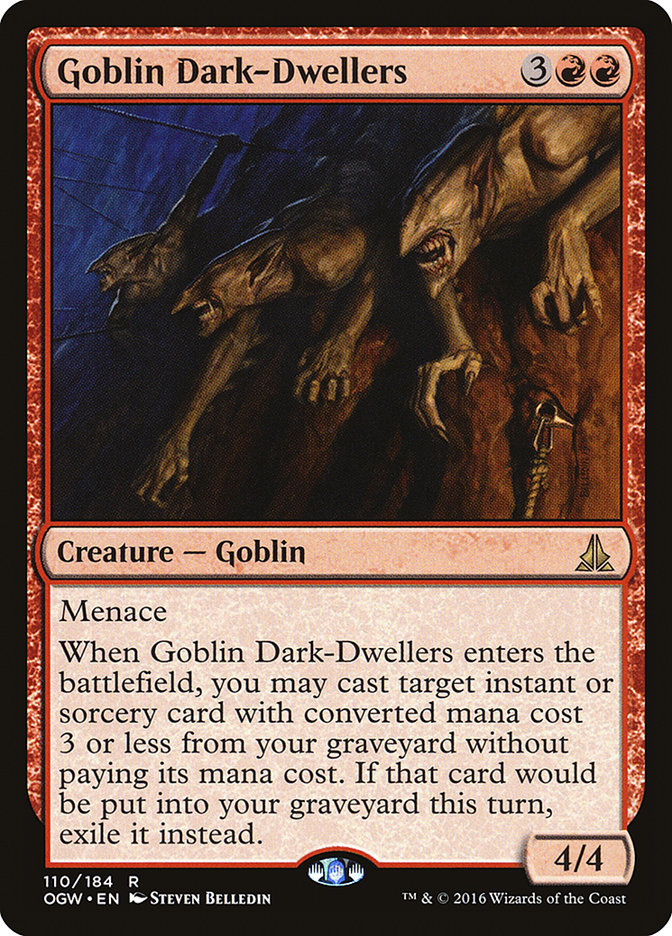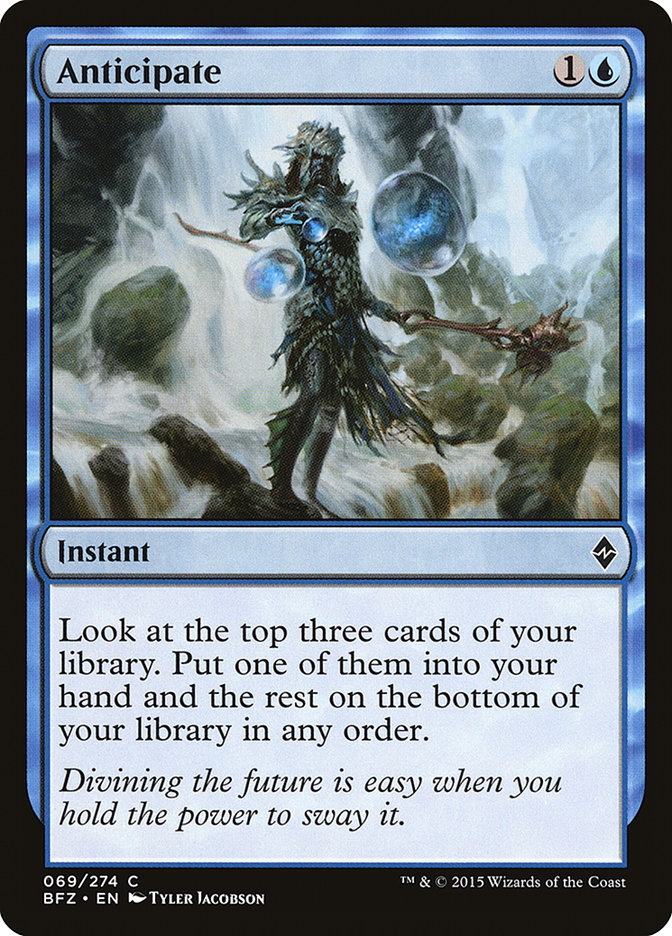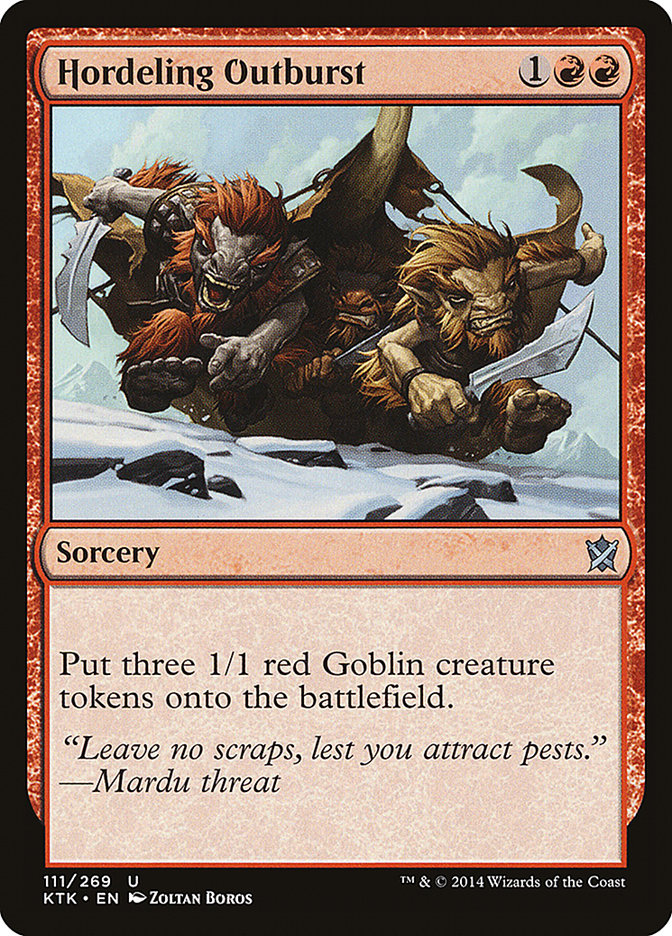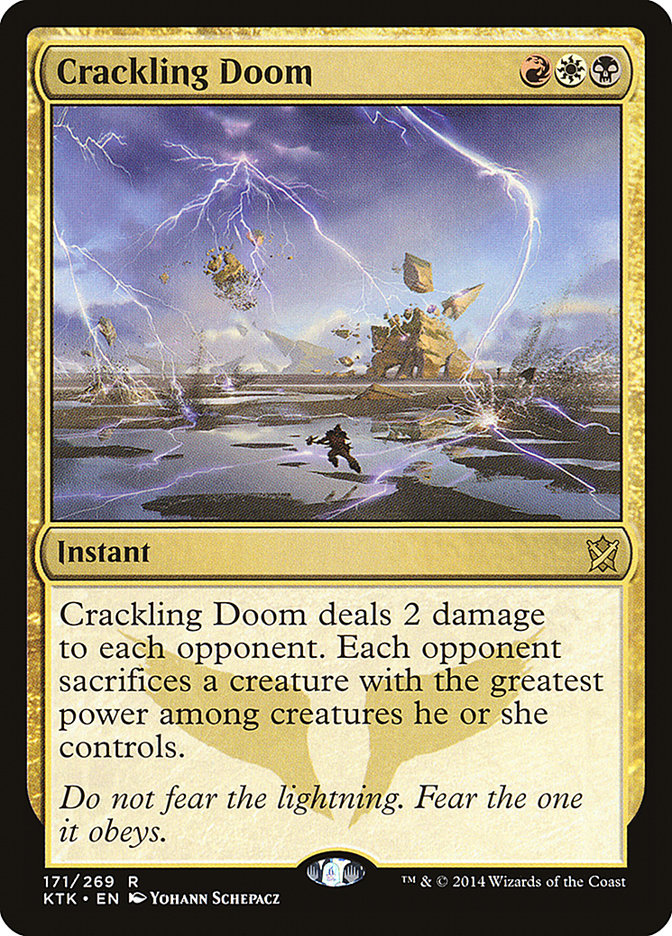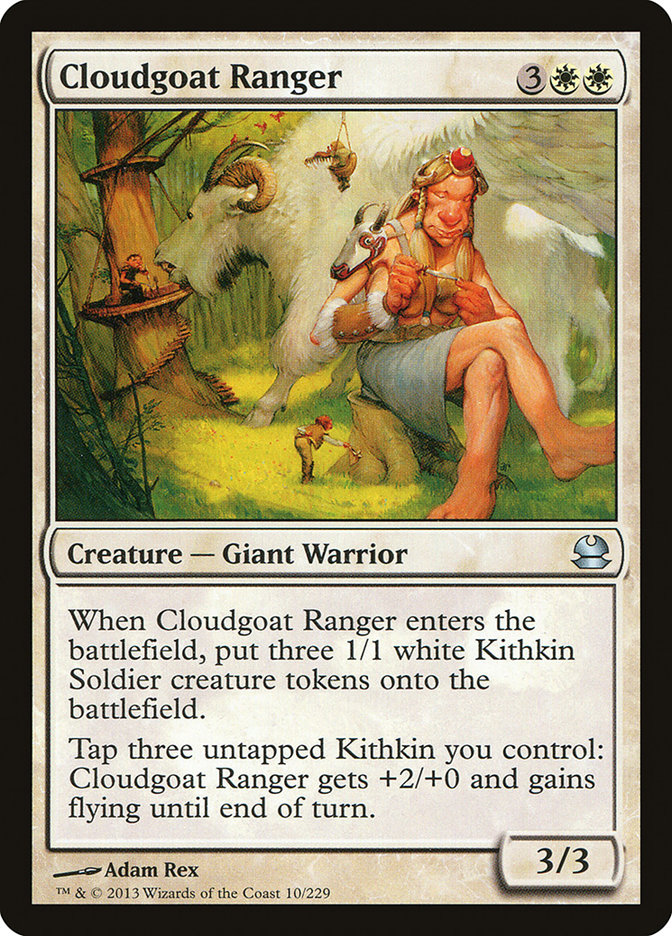With Oath of the Gatewatch now on the horizon we are entering the lame duck period for Standard. The metagame is rather clear at this point, and much of the field has locked onto their deck of choice with little reason to change until Oath shakes things up. There may be an innovation or two left for those willing to work for it, but I would rather look ahead. One, it provides a significant edge in the early tournaments post-Oath, and two, it’s much more fun.
With that in mind I will discuss what I think is one of the more interesting cards to be spoiled so far, if not among the best: Goblin Dark-Dwellers.
Part Snapcaster Mage, part Abbot of Keral Keep. Either way, this creature is chock full of sweet sweet value, but even more than being a two-for-one, Goblin Dark-Dwellers provides you with an automatic double spell turn, where you both advance your board while controlling your opponent’s. These turns have been critical in many Standard matchups in recent years, most notably right now with Abzan. When every card you play is so powerful, playing two at once gives you a sizable tempo lead if your opponent is unable to match. This advantage can quickly snowball to victory, so having them built into a single card is quite attractive.
That Dark-Dwellers allows you to gain such a tempo advantage while also being able to create card advantage means it is flexible enough to be relevant not only in tempo-oriented games but also in longer attrition games. Versatility is another hallmark of Magic in recent years, as it is difficult to consistently execute a completely linear gameplan. You need an alternate route to victory, and this card can give that to midrange-aggressive strategies.
Having established that this is a card deserving of further exploration, I would now like to run you through my process for analyzing the card and its potential place in Oath of the Gatewatch Standard, ending with a my early brainstorms for decks that utilize it.
Step 1: How is Goblin Dark-Dwellers Used Optimally?
I have partially answered this above, noting that the card fits best in aggressively slanted midrange strategies, but I could also see this at the top end of an aggressive deck’s curve or in a true midrange deck where it can be a stabilizer against aggro and a value-threat against control.
Unfortunately, the latter is rather difficult in the current Standard because the 4/4 body is not good at stabilizing most boards. It does not block Siege Rhino or Tasigur, the Golden Fang; trades down with Anafenza, the Foremost; and is vulnerable to the hordes of creatures Atarka Red can produce. Therefore, I will focus on the first two shells with the caveat that we should all keep the last one in mind should the Standard metagame dramatically shift, or revisit it once the Abzan menace has rotated.
I have just answered the big-picture, strategic side of this question. The other side is tactical and requires us to determine how to best utilize the ability. The obvious answer to this is to pack our deck with three-mana spells, as those will provide more value than two- or one-mana spells on average. Remember that you can raise your curve a little to make this card better, but going too far will weaken your deck too much in the earlygame and diminish your ability to double-spell past the gains that Goblin Dark-Dwellers gives you.
The other part to this optimization is filling our deck with a range of spells with different effects so that we always have something relevant to recast. It does little good to have a graveyard filled with powerful removal if they have no creatures on the battlefield, and unlike Snapcaster Mage, Dark-Dwellers is a card you want to cast on-curve so you can start attacking with the sizable body. That means we need to have enough spells that we can cast proactively in order to always have something to do.
The types of cards that can be cast proactively include: discard spells, card draw spells, and creature spells (i.e. Hordeling Outburst).
The ideal deck for Dark-Dwellers will contain all of these kinds of spells as well as a healthy amount of removal. Notably, Dark-Dwellers does not interact favorably with counterspells, so you should avoid them as much as possible. Tweaking the relative numbers on these types of cards will be the most important part of anyone building around this card, so I would urge you to experiment as much as possible in order to come to the best build.
Step 2: Look Up Every Instant and Sorcery with CMC 3 or Less
This just involves a simple Gatherer search, but it is important to be exhaustive since you never know which card could tie everything together. In my search there were 196 such spells and by eliminating cards that were too weak or did not fit with Dark-Dwellers, I narrowed down the list to this:
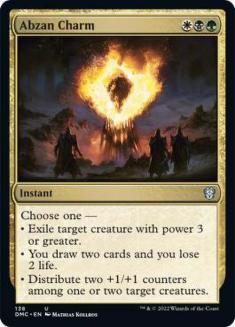

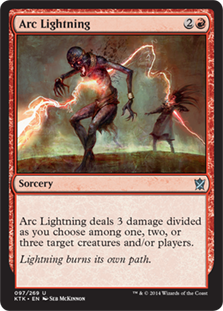
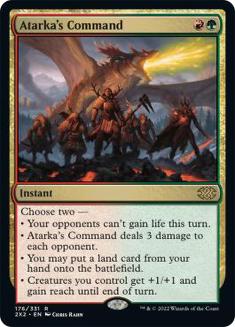
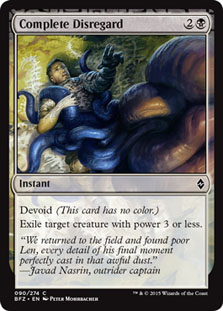
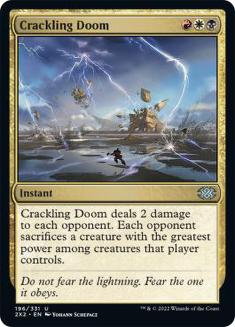
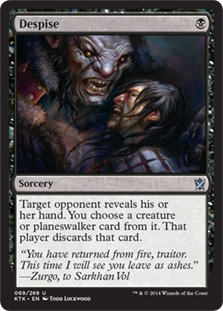
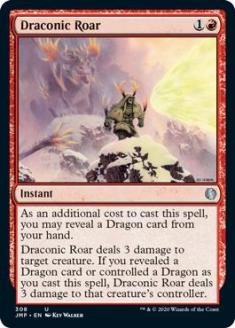
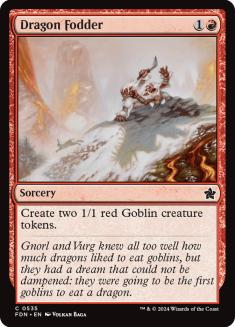
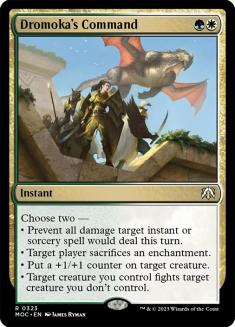

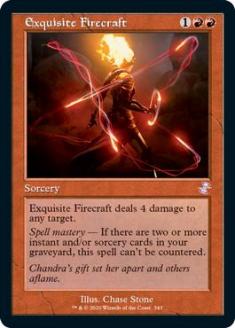
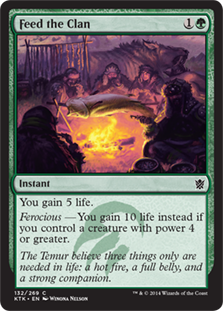
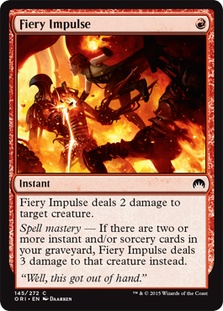
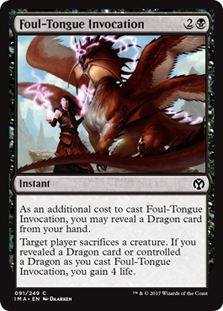
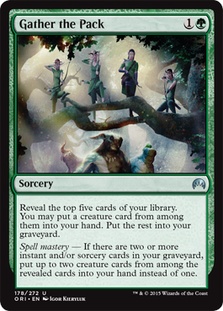
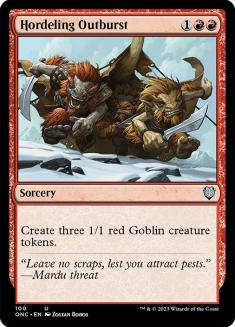
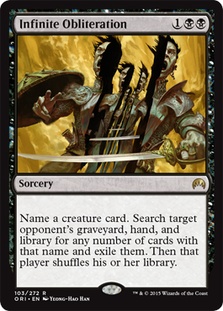
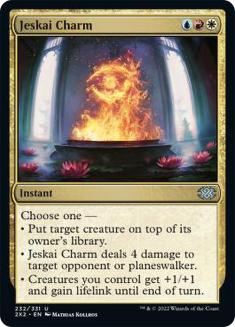
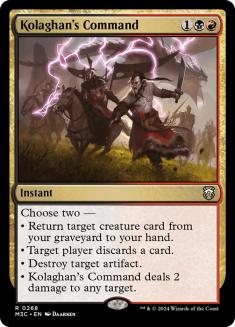
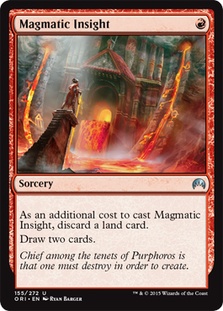
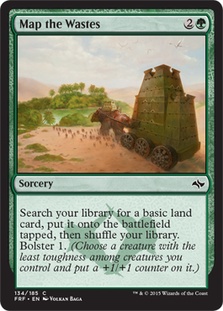
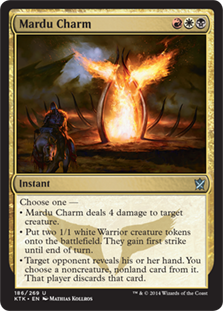
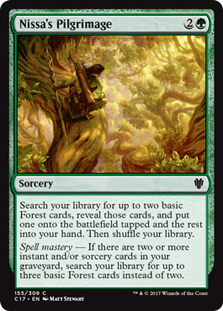
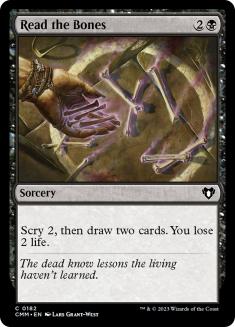
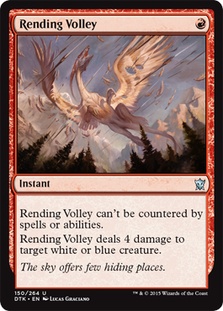
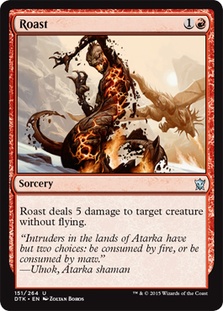
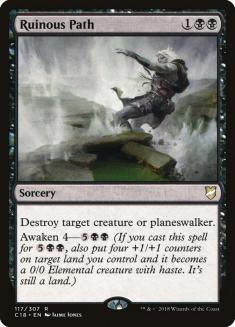
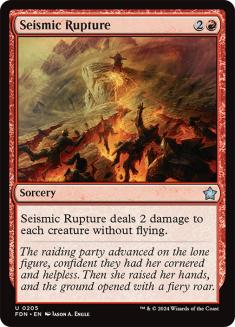
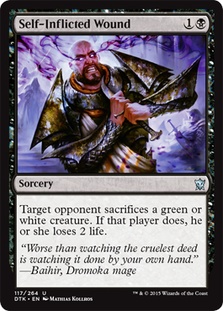
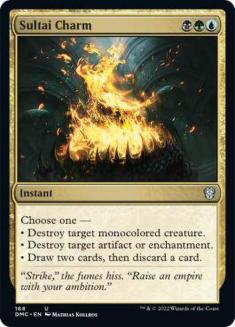
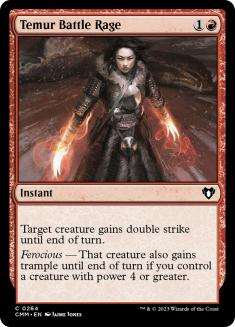
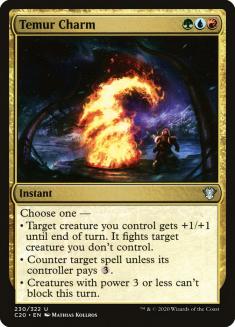
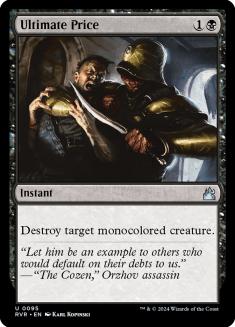
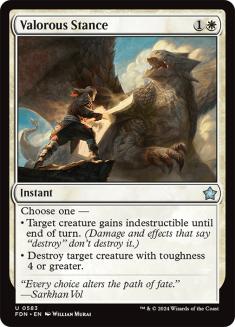
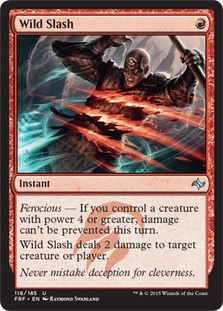
So which are the most exciting cards?
For removal, the clear winner is Crackling Doom. Already a Standard staple, this is the most powerful removal spell for its cost, it advances an aggressive gameplan, and it can take out some of the large creatures in Standard that Dark-Dwellers cannot block or attack into. I would strongly bias myself towards Mardu in any Dark-Dwellers deck.
Another exciting card is Kolaghan’s Command. There are plenty of creatures to kill with it (Jace and Soulfire Grand Master chief among them), it provides incredible value in attrition games, and it can frequently be cast proactively by choosing the discard a card and return a creature from the graveyard modes. You can even return another copy of Dark-Dwellers and simulate the Snapcaster loops that many Grixis decks in Modern use so effectively. Powerful loops like this can give a deck the needed staying power to compete going long against decks like Jeskai Black and Esper Dragons, and doing so with cards that are also relevant early on is the ideal of midrange decks.
The last removal spell I will talk about is Exquisite Firecraft. This card has fallen out of favor since Battle for Zendikar entered Standard, but the ability to play an effective eight copies with Dark-Dwellers is intriguing in an aggressive strategy with lots of burn. This really takes advantage of the menace ability on Dark-Dwellers to close games out from 8-12 regularly.
We have two solid options for discard spells in Duress and Transgress the Mind. Not much to say here, as these have been staples for a while and should make our deck in some numbers, both in the main and sideboard.
The card draw options are limited, especially when the best of them, Painful Truths, does not interact favorably with Dark-Dwellers. The next best is Read the Bones, which is still quite potent, and the extra velocity relative to Painful Truths will help us find the most possible Dark-Dwellers, which is all we really want to do. With the card advantage from Kolaghan’s Command Read the Bones should be sufficient since we want to maximize our number of spells that affect the board in order to take full advantage of the tempo gain Dark-Dwellers provides.
Our search for creature spells yields the obvious Dragon Fodder and Hordeling Outburst. Either of these lets Dark-Dwellers function nicely as an army-in-a-can type card similar to Siege-Gang Commander or Cloudgoat Ranger. Doing so would certainly be good against decks filled with one-for-one removal like Jeksai Black while also letting you stabilize the board against Atarka Red. If you expect these two decks, I would look towards the token-makers. If you expect more Abzan, you can leave them at home.
Step 3: Brew
Here are my initial passes with Dark-Dwellers. Up first is a Mardu list that is derivative of the deck I registered (and unfortunately did not get to play) at #SCGPC:
Creatures (12)
Planeswalkers (4)
Lands (25)
Spells (19)

This list contains all the most powerful cards to pair with Dark-Dwellers in a shell that makes sense for the card, so it is definitely the most promising to me. My primary concern is that my desire to play more spells for Dark-Dwellers has gone too far, and I have reduced the deck’s threat density by too much so that it will too often be unable to close games when necessary. The Mentors in the board are meant to allow you to pivot to a more aggressive gameplan against decks like Jeskai Black, Esper Dragons, and Atarka Ramp, but I could easily see moving them to the main in order to facilitate a more aggressive gameplan.
It is also noteworthy that just like Painful Truths does not work with Dark-Dwellers, Radiant Flames is replaced by Seismic Rupture. We lose the ability to cast Flames for exactly one to potentially save a Soulfire Grand Master, but I think the ability to wipe their board on turn 5 and immediately start attacking is more valuable. Closing the game against Atarka Red is important because their deck is powerful enough to win through plenty of hate if given enough time.
One card I would like to find room for here is Mardu Charm. The versatility of the Charms is excellent with Dark-Dwellers, and this one covers all the needs I mentioned above: It is removal, discard, and a proactive threat all at the same time.
The second brew I have is a bigger take on Atarka Red:
Creatures (15)
Lands (24)
Spells (21)
Sideboard

As players have become aware of the combo element to Atarka Red, it has become less powerful, and players are relying more on the tokens + Atarka’s Command element to win games. This deck takes that to the extreme, eschewing the Become Immense/Temur Battle Rage combo entirely in favor of a more token and burn-centric gameplan. Interestingly, the threat of the combo should give you more time to execute this gameplan, either by building a bigger board for Atarka’s Command or by having more time to throw burn at your opponent’s face.
The higher land count needed to support Dark-Dwellers opens up more sideboard options, and the combination of Ashcloud Phoenix, Den Protector, and Outpost Siege gives you plenty of staying power against bigger decks. Roast is an absolute necessity since the maindeck has a harder time going over the top of Siege Rhino. Even with the added density of Roasts from Dark-Dwellers, this list likely has a worse Abzan matchup than traditional Atarka Red, but it should make for an unexpected juke in the early Oath of the Gatewatch metagame.
Given how long the list of cards I have for Dark-Dwellers is, these are far from the only ways to go with the card, but they are where I would start. With as many layers as it has, Goblin Dark-Dwellers will be a difficult card to completely unpack, but the potential is certainly there for it to make a significant impact on Standard. If the rest of Oath of the Gatewatch is similarly complex and powerful, we will be looking at a very interesting Spring. I, for one, am ready for some change. As the old saying goes, out with the Rhino, in with the Goblin.
Or something like that.

